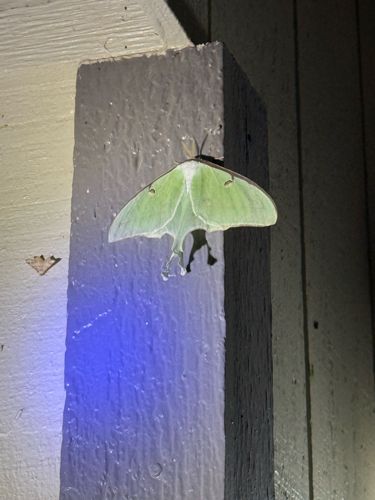Luna Moth
Scientific Name: Actias luna
Order & Family: Order: Lepidoptera, Family: Saturniidae (giant silk moths)
Size: Wingspan typically ranges from 7.5 cm to 11.5 cm (3 to 4.5 inches), making them one of the largest moths in North America.

Natural Habitat
Luna Moths are found in deciduous broadleaf forests and woodlands, particularly those with an abundance of their host plants. They are typically found in North America, from eastern Canada and the United States, extending south to Florida and west to the Great Plains.
Diet & Feeding
Adult Luna Moths do not have functional mouths and do not feed. Their diet as larvae (caterpillars) consists of the leaves of various deciduous trees, including sweetgum, hickory, sumac, persimmon, and birch.
Behavior Patterns
Adult Luna Moths are nocturnal and are strongly attracted to light. They emerge at dusk and fly during the night. Their primary purpose in the adult stage is reproduction, as they only live for about a week and do not feed. Females lay eggs on host plants, which then hatch into caterpillars. The caterpillars feed on leaves, grow through several instars, and then pupate, often forming a cocoon among leaf litter or buried in the soil, depending on the subspecies. They typically have one to three generations per year, depending on the climate. The long tails on their hindwings are thought to help deflect bat echolocation.
Risks & Benefits
Luna Moths pose no risks to humans, as they do not bite, sting, or carry diseases. From an ecological standpoint, they are beneficial as pollinators, although their primary role as adults is reproduction. Their caterpillars play a role in nutrient cycling by consuming plant material, and both larvae and adults serve as a food source for various predators (birds, bats, etc.). Their presence indicates a healthy forest ecosystem.
Identified on: 8/24/2025